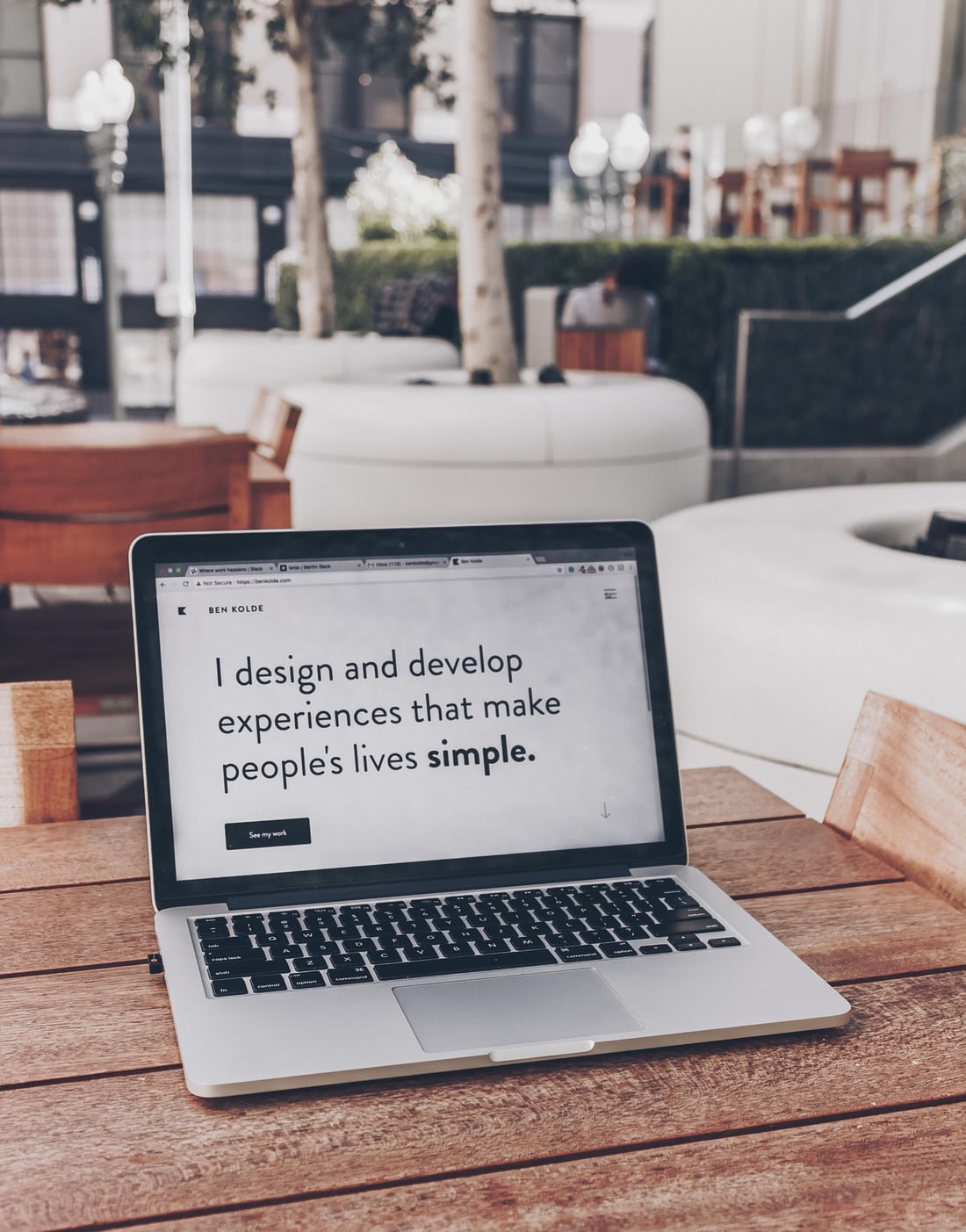As a small business owner, having your business put out in the online space gives you an edge. A great and well-built website enables you to have a credible, reliable and more efficient business online.
Although, creating a website might be a bit challenging. You can actually create a customized one for your business. No matter what type of website you would like to build for your business. This here would show you how to do it from scratch.
Below are the steps you need to follow to build your website from scratch:
- Have a set goal.
- Research your Competitors.
- Explore your Visual options.
- Choose your Domain name.
- Design the layout of your Website.
- Create a nice colour palette.
- Choose your fonts well.
- Arrange your content.
- Rank for SEO.
- Make your website compatible with mobile phones.
1. Have a Set Goal
Table of Contents
Whether you want to build a business, portfolio website or blog. It is essential that you clearly define your set goals. With a clear goal in mind, your brand/business will be better shaped.
Below are a few elements you might want to look at:
- A blog
- A Gallery for photos
- Your social media links
- E-commerce stores
- Chat features
- Members of an area
Once you have your goals all planned out, you would need to create your brand identity. This is a part of your website that is very important. From the tone of your intro copy to your brand logo and CTA buttons.
The best way to start out is to draw out a plan on paper. Describe how you would want your website to be like. Think on the type of words and catch phrases you will use. Discover your brand voice and the kind of vibe you need to flow in your website.
Once you have all this penned down, it would be much easier to work with the individual elements.
2. Research your Competitors
For you to build and engage your website from scratch, it is important for you to conduct research on your competitors. You would need to have an idea of what your target audience wants and what information you can give them.
For you to conduct this research, you can go to Google and take a sneak peek on how you would want your website to be. Now go through their feeds and scan the contents they provide. From their blogs to their forums, testimonials and FAQs.
You can also make use of the People Also Ask section of Google page results. This will give you a direct answer to all your questions and give you more insights. Providing you the necessary information of what your potential audience want.
3. Explore your Visual options.
The visuals of your website are very important. You will have to take your time to make sure that it is visually appealing. Hence, the designs for your website should be taken into serious consideration. For a quick guide, head out to survey the websites of professionals to see which ones best suit your vision.
Whether you are a professional set to build a portfolio website or you just want to build an online store. There are dozens of options that are out there and customizable for you.
Just like we mentioned earlier, be sure to note what your competitors are doing. Search for more inspiration line through apps like Pinterest, Instagram and even LinkedIn. All these will give you an idea on your choice of fonts, colors, styles and global trends.
This is not an excuse to copy verbatim what you see online. However, you want to have an experience and an understanding of what purpose your website is meant to serve.
4. Choose your Domain name and hosting
Here is the amusing part of building your website. Choosing a domain name. This is like the address of your website. It is pretty easy to choose one. Your website name should be easy to remember and quite unique.
Domain names usually have the name of the website or the business name, followed by an extension. For example, a (cats.com) or an (cats.org). If you are confused or lost on how to create a domain name, you can easily try this business name generator to help you out. After choosing a domain name, next is a host for your website. While domain name is like your website address, the hosting is like the house itself.
5. Design the layout of your Website
With the aid of a website builder software what you see is what you get (WYSIWYG), you do not have to use a single code to build your site. Everything has been built already into the website for you. All you have to do is to choose the template that is specific to your website. Together with the visuals you plan to input in your website.
Its now time to put together all your design ideas into one piece. This is where the bulk of the work lies. To ensure you do this rightly at this delicate stage, it is important you follow these steps one at a time.
a. Generate a site map
This is the Architectural blueprint you will be working with. It should include how you plan to create your pages and make them connect with each other. By doing this, your users have the liberty to browse smoothly and navigate perfectly on different pages. Your website should be organized in such a way that your users don’t need to click more than twice to navigate from one page on to another.
In order for this to happen, you need to add a menu on your website that would be visible on all your pages. If your website is a one-page website, you should remember to add an anchor menu that will take your users directly to your desired page.
Another important thing to note in your site is to add a clickable logo on your menu. This will direct visitors back to your home page.
b. Include your necessary pages
For better design optimization, your website should include these pages to have that professional look:
c. An exciting homepage:
This what your visitors see first. So, it has to look beautiful but also full of necessary information. You should be able to present all your important elements at a glance. This will make it easier for your users to know who are and what you are willing to offer.
d. A gallery of pictures displaying your products and services:
This is the heart of your website. Here, your users can easily go through your products. Make sure to write captivating description of your products, so you can get the attention of your potential clients and customers.
This is also very crucial for the display of your product’s photography. So that your products can be seen clearly and better appreciated.
e. Your ‘About’ Page
This should pose as your business card online. This is where you describe yourself to your visitors and users. What your values are, your motto, and other important information you feel your visitors should be aware of, regarding your brand and teams involved.
f. Your Contact Info
Your visitors or users should not be left wondering how they should reach you. There should be a page in place where your contact details are. From your phone numbers, emails, links and apps you are most active on.
This way your users can easily reach out to you when necessary. It is a good practice to put your important contact details at the footer of your website.
g. You may want to include other things like
Blogs: having a blog will give you an edge. Because you will be giving your visitors and audience fresh feed in your website.
FAQs: some of your visitors need a separate page to answer their questions. Having an FAQ page will help ease off the stress when they are confused in your site.
Testimonial page: this is more of a review page. Where your pleased customers get to express themselves. This encourages visitors to know whether to ask for our services or leave the page.
6. Create a nice color palette
Color is a very important element in your website design. It should merge with the identity of your brand. It is not there for the fun of it. Your psychology about colors should be taken into consideration. Because different colors evoke different moods and emotions.
For instance, the color blue gives off a cool and stable effect. Most tech brands, businesses and corporations use it as their brand color. Blue also reflects sadness; because of the term ‘feeling blue’. Orange on the other hand is known for exuding vibrance, elegance and vitality.
Also remember that the feeling of a color is related to its shade. Together with the colors that they are paired with to complement them. These are very important to note for your website color scheme.
to make your website stand out, think about the goals you wish to achieve with your website. The kind of environment you want your visitors to come into. The feel and emotions you want it to give.
The more allied your web design is with your brand. The more people will want to connect with you. Thereby, spending more time on your website. This will have a high conversion rate and more people will want to engage in on your website.
7. Choose your fonts well
Fonts, texts, typefaces whichever one you choose has an effect on people. Just like colors they need to be carefully picked and decided on. To choose and pick out the best fonts for your site, there are a few things you should put into consideration.
First of all, the elements on your website should guide you in your choice of font. Because the elements that build your brand need to have the same voice.
Just like you did previously in finding the website that match your brand. You need to browse different typefaces and choose the one that resonates with your brand and personality.
8. Arrange your Content
Here, we talk about hierarchy. It is important that your site users and visitors know how and when to get the different information that they need. So, you need to keep your site well composed and very arranged.
Your most important content should always come first. Where your visitors and users don’t have to scroll so much to find. Sometimes, most of your audience might be skimmers, just going through tour website to find the content they need.
To make it easier for them to find what they need soon. You may consider attaching videos, images or even infographics to keep them glued to your page. While finding what they need.
9. Rank for SEO
SEO is simply Search Engine Optimization. It is the process of enhancing your site so it can rank high in Google analytics. It is expedient that your page ranks high in google. So it can generate more traffic for you and get you more leads and potential customers to patronize your products.
For you to really understand SEOs and learn how to better optimize your page, you can visit Ahrefs or SEMrush. They will guide you on how to use the perfect keywords, structure your content, understand meta titles and descriptions, a whole lot!
You can also venture into using the advanced SEO: Ahrefs and SEMrush. So they can take you on a more detailed journey on SEOs. Depending on what you want for your website, it is important you take advantage of the advanced SEO tool.
10. Make your website compactible with mobile phones
It was recorded that on April 2021, over 50% of online users where from mobile phones and tablets. It was for this reason that google created the mobile-first indexing. This is a system where search engines rank based on the flexibility of the websites to mobile phone users.
So, it is ideal for you to make out time to work on your mobile designs. So that your user experience would be smooth, seamless and SEO friendly. Keep in mind the ability for your users to read and easily navigate through your web pages. You can also include animations in your design and an attractive mobile menu.
Conclusion
In conclusion, if you have been you have been battling with how to build your website, well, creating a website is not that difficult. There are little hassles involved if you put your mind to it. With this guide, you can effectively create one and make it work for you. Your business needs to stand out and putting it out there in the online space will give it a great edge. Creating a professional website with these aforementioned steps is key.



